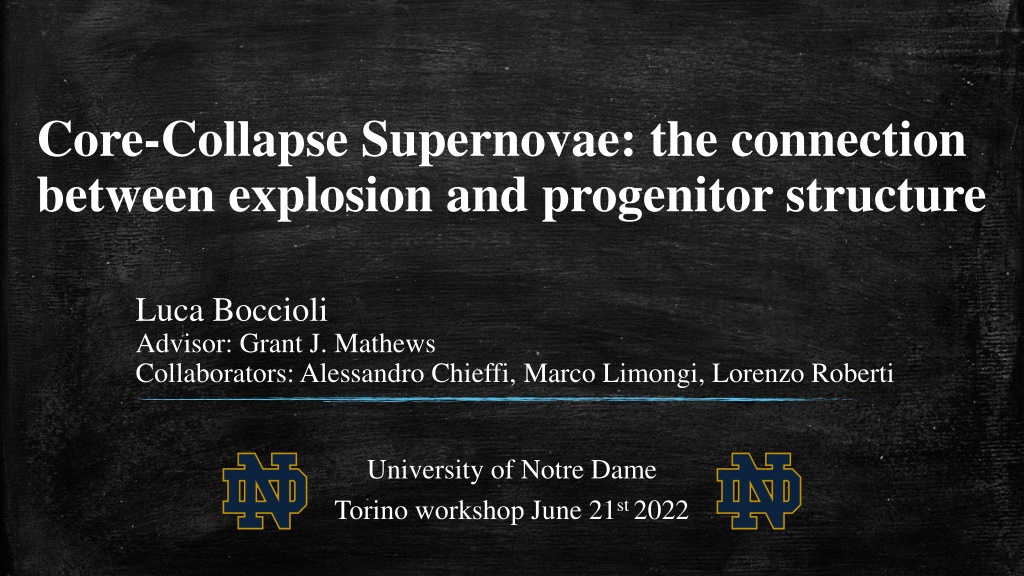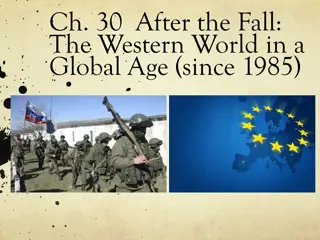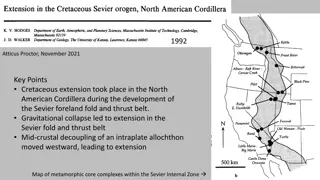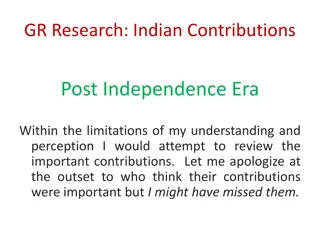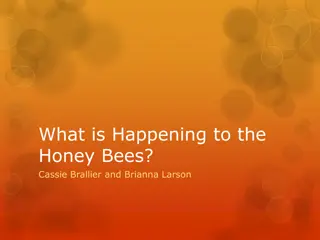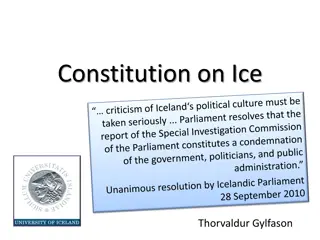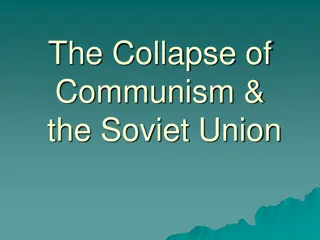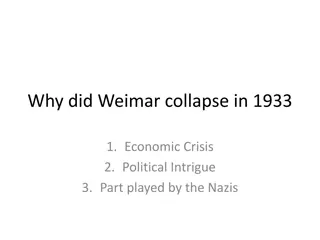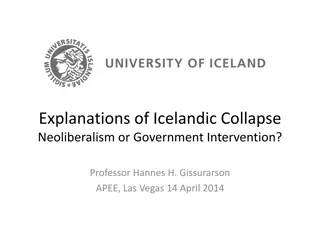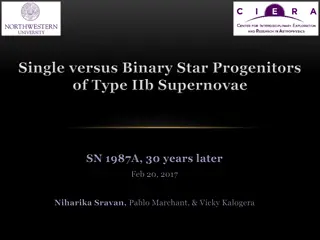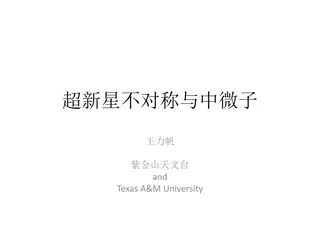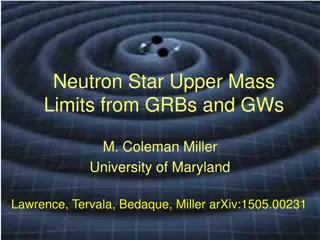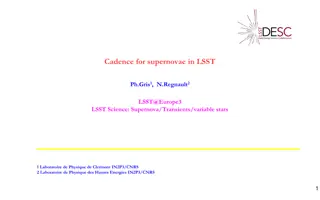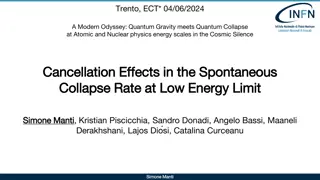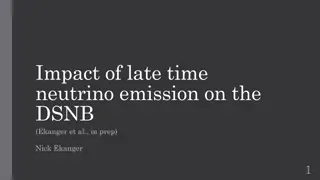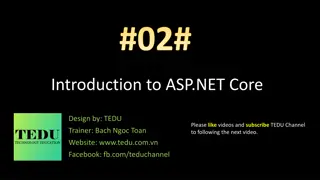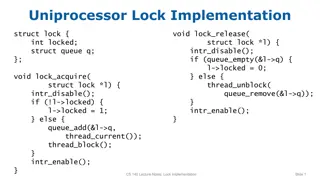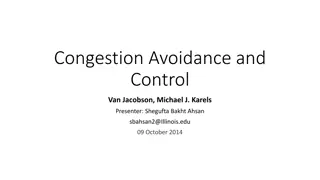Understanding Core-Collapse Supernovae and Progenitor Structures
Explore the intricate connection between core-collapse supernovae explosions and progenitor star structures through the research conducted by Luca Boccioli and collaborators. Delve into the complexities of the supernova mechanism, including the collapse of outer layers, core bounce, shock propagation, and explosion/fallback time. Learn about simulation setups and the factors that determine whether a star explodes or collapses, with a focus on the properties of the Si/O interface.
Download Presentation

Please find below an Image/Link to download the presentation.
The content on the website is provided AS IS for your information and personal use only. It may not be sold, licensed, or shared on other websites without obtaining consent from the author. Download presentation by click this link. If you encounter any issues during the download, it is possible that the publisher has removed the file from their server.
E N D
Presentation Transcript
Core-Collapse Supernovae: the connection between explosion and progenitor structure Luca Boccioli Advisor: Grant J. Mathews Collaborators: Alessandro Chieffi, Marco Limongi, Lorenzo Roberti University of Notre Dame Torino workshop June 21st 2022
Introduction: the Supernova mechanism Core collapse Supernova (CCSN) 1) Collapse Outer Layers Iron Core Luca Boccioli, University of Notre Dame 2 of 20
Introduction: the Supernova mechanism Core collapse Supernova (CCSN) 1) Collapse Outer Layers 2) Core Bounce Iron PNS Core Luca Boccioli, University of Notre Dame 3 of 20
Introduction: the Supernova mechanism Core collapse Supernova (CCSN) 1) Collapse Shock 2) Core Bounce PNS 3) Shock propagates Luca Boccioli, University of Notre Dame 4 of 20
Introduction: the Supernova mechanism Core collapse Supernova (CCSN) 1) Collapse 4) Shock stalls 2) Core Bounce PNS 3) Shock propagates Luca Boccioli, University of Notre Dame 5 of 20
Introduction: the Supernova mechanism Core collapse Supernova (CCSN) 1) Collapse 4) Shock stalls 2) Core Bounce 5) -delayed heating ( -driven turbulence) PNS 3) Shock propagates 6) Explosion/Fallback Time ~ 1s Luca Boccioli, University of Notre Dame 6 of 20
Introduction: our simulation setup GR1D: spherically symmetric (1D) model with neutrino transport: cannot explode O Connor & Ott (2010) CQG 27, 114103 O Connor (2015) ApJS, 219, 24 GR1D+: spherically symmetric with convection through MLT (1D+): can explode Boccioli et al (2021) ApJ 912 29 Luca Boccioli, University of Notre Dame 7 of 20
What makes one star explode and another collapse? Short answer: the accretion of the Si/O interface... but it s more complicated: what property of the Si/O interface makes one star explode and another collapse? Luca Boccioli, University of Notre Dame 8 of 20
Explodability depends on many variables = explosion = failed SN Ertl 2016 KEPLER & PHOTB the model used to trigger the explosion 1D+ KEPLER & GR1D 1D+ the code used to evolve the star FRANEC & GR1D 1D+ the reaction rates for key processes FRANEC & GR1D new 12C fusion rate(*) (*) = Tumino et al. (2018) Luca Boccioli, University of Notre Dame 9 of 20
Previous studies Ertl 2016 PHOTB: Enhanced neutrino luminosity based on observations of SN1987a Black = failed SN Colors = successful SN ~5% of progenitors don t follow the 4 - M4 4 criterion Luca Boccioli, University of Notre Dame 10 of 20
Our approach Example of a 21 M without convection 1) We run a standard 1D supernova simulation of each star, without the inclusion of -driven convection Raccr 2) We define Rsurge caused by the accretion of the Si/O interface Rsurge taccr Luca Boccioli, University of Notre Dame 11 of 20
Our approach Example of a 21 M with convection 3) We run the same star using STIR, which implements -driven convection in our code using a MLT approach. Boccioli et al (2021) ApJ 912 29 4) We define the explosion being triggered when the shock reaches 500 km texpl Luca Boccioli, University of Notre Dame 12 of 20
Our approach Example of a 21 M before collapse 5) We then locate the Si/O interface in the progenitor. We do it by looking for a discontinuity in entropy. * 6) We identify the layer at which the discontinuity starts with a *. Surface Center * Luca Boccioli, University of Notre Dame 13 of 20
Results: Rsurgeand taccr Simulations without -driven convection with colors based on the outcome of the simulations with - driven convection There is a separation between explosions and failed SN for taccr < 0.4 s How do we connect Rsurge and taccr to properties of the progenitor star? Luca Boccioli, University of Notre Dame 14 of 20
Results: Raccrand taccr Example of a 21 M without convection How do we connect Rsurge and taccr to properties of the progenitor star? Raccr For taccr < 0.4 one can see that Raccr 1/taccr One can then show that: Rsurge / Raccr 2 / 2 Rsurge taccr Luca Boccioli, University of Notre Dame 15 of 20
Results: our criterion We are ready to formulate our criterion for stars with mass > 13 M : 3 ? 3 16 ? ? 0.25 failed SN If taccr> 0.4 s Otherwise If Rsurge / Raccr > 0.04 2 / 2 > 0.08 explosion Only ~ 4.5 % of progenitor stars are mislabeled Luca Boccioli, University of Notre Dame 16 of 20
Comparison with previous studies It s still work in progress! = explosion = failed SN There are two ranges where our results differ from Ertl (2016): Ertl (2016) This work 12 M 15 22 M 25 Luca Boccioli, University of Notre Dame 17 of 20
Comparison with previous studies 12 M 15: Ertl (2016): Small accretion rates Small luminosities that result in explosions This work: They either have large taccr, and therefore result in failed SN or they have small taccr but also small Rsurge and result in failed SN Luca Boccioli, University of Notre Dame 18 of 20
Comparison with previous studies 22 M 25: Ertl (2016): Large accretion rates Large luminosities that result in failed SN This work: Large accretion rates Prolonged heating and therefore even with large(- ish) taccr they result in explosions Luca Boccioli, University of Notre Dame 19 of 20
Conclusions Explodability strongly depends on how the progenitor star was evolved We presented a criterion based on full SN simulations that predicts the explodability of the star only from the entropy and density gradients before collapse Depending on how the explosion is triggered (this work vs. Ertl) one finds different properties of the progenitor star as being key to the explosion mechanism Luca Boccioli, University of Notre Dame 20 of 20
